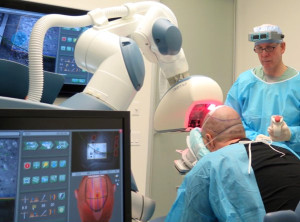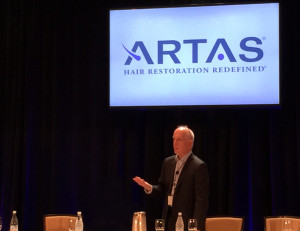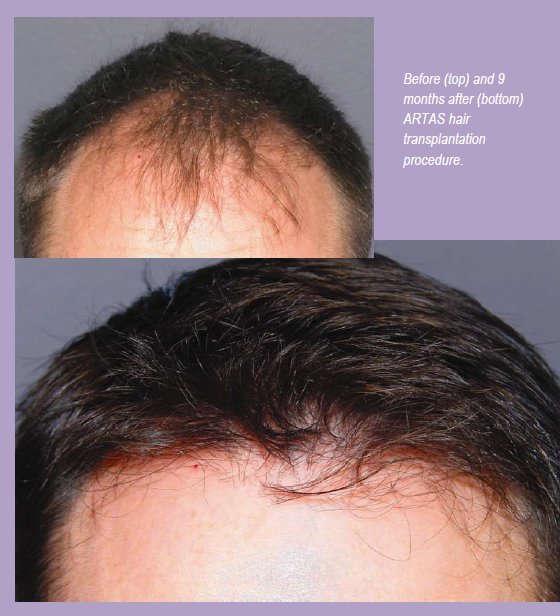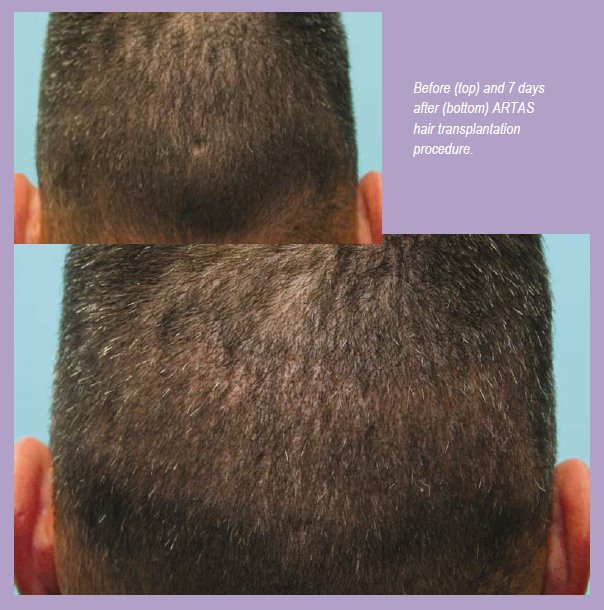Hair transplant pioneer Dr. Robert M. Bernstein and his colleague Dr. William R. Rassman have received a patent on a new method that improves the outcome of Follicular Unit Extraction (FUE) — the type of procedure used in half of all hair transplants performed world-wide. The key invention is the addition of a delay between the creation of recipient sites and the insertion of follicular units into those sites. The delay allows the healing process to commence before grafts are inserted, resulting in increased success of the transplant and an improved outcome.
Dr. Bernstein introduced the concept of “pre-making recipient sites” into medical literature in a 2012 publication in Hair Transplant Forum International, has discussed the idea extensively, and presented findings at the 2015 ISHRS Annual Scientific Meeting. However, this is the first time he has patented a hair restoration technique.
The first 24 hours after any wound to the skin is a critical period of time in the healing process. Dr. Bernstein describes this initial period in his 2012 publication:
During the first 24 hours following recipient wound creation, a flurry of biologic activities take place that facilitate healing. These include: the migration of platelets with subsequent release of cytokines, growth factors and pro-inflammatory proteins (histamine, serotonin, kinins, prostaglandins, etc.) that increase blood vessel permeability and stimulate cell migration. Allowing these processes to begin before implantation of the grafts should be beneficial to their healing and subsequent growth. ((Bernstein RM, Rassman WR. Pre-making recipient sites to increase graft survival in manual and robotic FUE procedures. Hair Transplant Forum Intl. 2012; 22(4): 128-130.))
By making recipient sites in advance of harvesting the grafts, three important things are achieved by the surgeon:
- The time in which follicular unit grafts are outside the body is decreased
- The placement of grafts is facilitated, making it less likely that they are injured in the insertion process
- The early phases of the healing process (e.g., blood clot formation, creation of new blood vessels) naturally complete, resulting in a more stable, “fertile” site supplied with oxygen and nutrients essential for graft survival.
Dr. Bernstein proposed “pre-making” recipient sites in 2012 as a way to improve the Follicular Unit Extraction (FUE) procedure, and robotic-assisted FUE (Robotic FUE) in particular. This is due to the fact that the positioning of the patient makes it problematic to create recipient sites and place grafts while follicular units are being extracted from the donor area. This is not the case in Follicular Unit Transplant (FUT) procedures, in which a donor strip is removed from the patient then dissected on a dissecting table. In FUT, recipient sites can be created and grafts can be placed concurrently with the dissection process.
“Pre-making” recipient sites is a protocol that should be followed during all FUE hair transplant procedures. It is also applicable in hair multiplication and hair regeneration techniques that are being studied as a way to provide an unlimited amount of donor hair for hair restoration purposes.
Posted by










